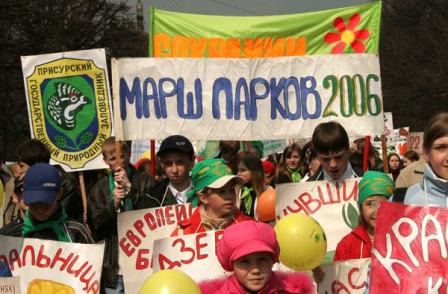|
|
the middle
tier of civil society, which develops with even greater
difficulties, is formed on the basis of non-economic group
interests. the soviet prototypes of these organizations were, in
effect, the instruments of the political regime. most of them were
unable to adapt to the post-soviet realities and disintegrated, such
as, for instance, the soviet mass youth movement directed by the
young communists league (komsomol). |

first mass
public movements of a different kind appeared during the
perestroika.
these were umbrella type organizations that brought together the
numerous non-formal groups that appeared during this period. in
russia, the democratic russia movement was, perhaps, one of the
best-known examples of such popular movements. by the late 1980s it
had become one of the most influential social and political
organizations in the country. it organized mass rallies and put
pressure on the authorities to replace corrupt party and state
functionaries. many of its members were successful in the elections
to the ussr and russia锟絪 supreme soviets in 1989-90, as well as in
local elections.
democratic russia played an important role in accelerating the
political transformation of the country. eventually, however, the
heterogeneous nature of the movement锟絪 constituent elements and the
diverging goals pursued by its various factions began to tear it
apart. in 1993 the movement disintegrated.
the birth of
the mass ecological movement also goes back to the years of the
perestroika.
at that time it often joined forces with the general democratic
movements, such as democratic russia. in 1989-90 the ecological
movement split into two strands 锟?political and functional. the
forming political parties absorbed the political strand, whereas the
functional strand continued to exist as an important element of
civil society. however, in the conditions of the deepening economic
crisis the ecological movement became fragmented and lost much of
the influence that it had had at its peak in the late 1980s.
at the end of
1980s independent women锟絪 organizations sprang up in russia, and
their number grew steadily throughout 1990s. by the start of the new
century, over 600 women锟絪 organizations were officially registered
with russia锟絪 ministry of justice. these bodies function in
different areas of public life: from economy (e.g., the all-russian
association of women-entrepreneurs) to social areas (e.g., the
society of assisting large families).
|
copyright $5 minimum deposit online casinoed
material |
|